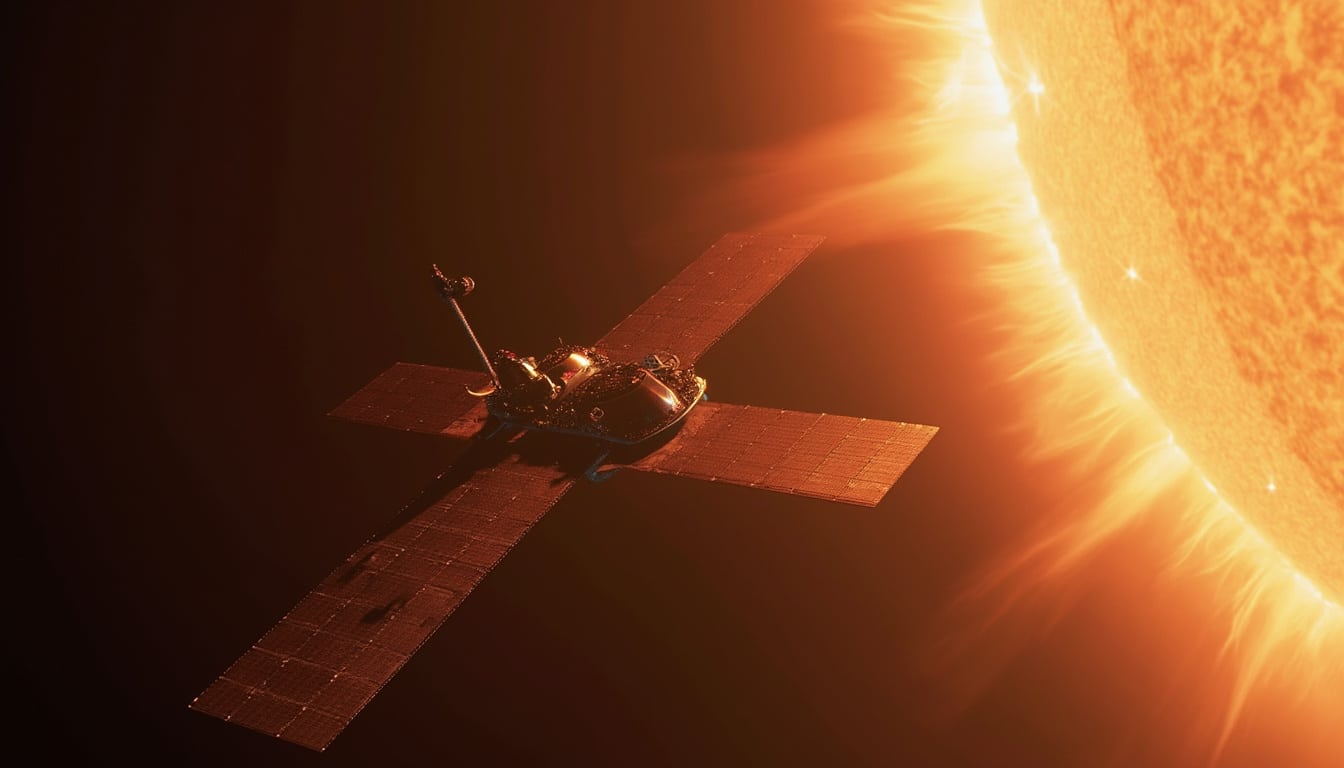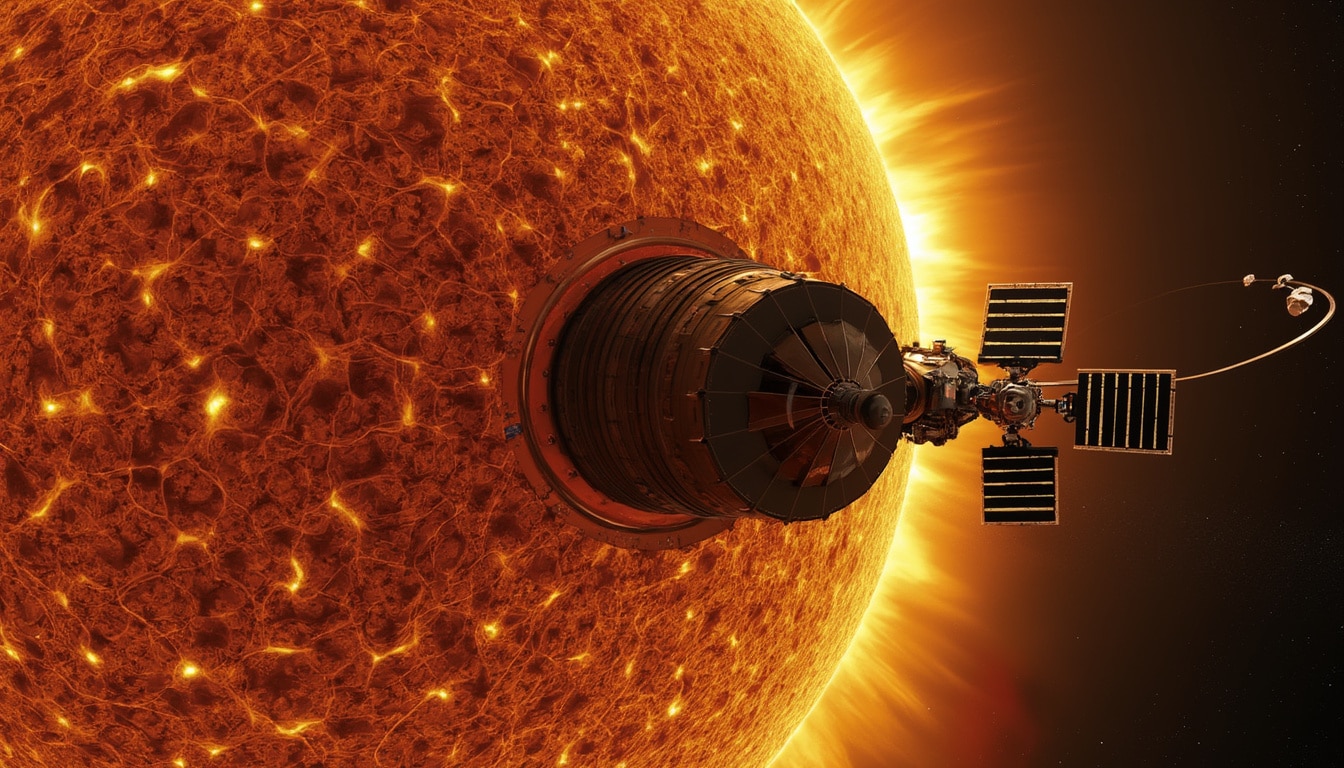The excitement surrounding NASA’s Parker Solar Probe intensified recently as it successfully completed its second close flyby of the sun. This remarkable feat took place just a few million miles from the solar surface, reaffirming the mission’s ambitious goal of unlocking the mysteries of our star. The spacecraft, now a pioneer in solar exploration, continues to operate autonomously while gathering invaluable data about solar winds and solar activity. With every pass, it enhances our understanding of solar phenomena, which can have significant implications for Earth and beyond.
Engineered to withstand the scorching temperatures of the sun’s corona, the Parker Solar Probe is a testament to human ingenuity in the field of space exploration. In its latest science-gathering encounter, the probe matched speed records previously set, showcasing its advanced thermal protection system and robust engineering. The mission highlights collaboration among U.S. aerospace giants such as Boeing, Lockheed Martin, and Northrop Grumman, each contributing to this historic journey into our solar realm.
Navigating the Solar Mysteries
The mission of NASA’s Parker Solar Probe is nothing short of Herculean. Launched in 2018, the spacecraft is designed to venture closer to the sun than any previous probe, gathering crucial data that could reshape our understanding of solar mechanics. Most notably, the probe recently made headlines by completing its second close flyby of the sun on March 22, 2025, where it recorded unparalleled solar metrics while traveling at 430,000 miles per hour.

The Science Behind the Flyby
During this remarkable approach, the Parker Solar Probe maneuvered within just 8 million miles of the sun’s surface. Pre-programmed science instruments collected data on solar wind behavior and the dynamics of the outer solar atmosphere, commonly known as the corona. This region has perplexed scientists for decades, particularly regarding why it is significantly hotter than the sun’s surface. The probe’s findings during this flyby will enable researchers to delve into these critical questions.
The data gathered is aimed at answering fundamental questions in solar science. For instance, understanding the mechanisms behind solar winds can significantly upgrade our ability to predict space weather, which often disrupts communication systems and satellites on Earth. Solar flares can even pose threats to astronauts and technologies in orbit, making this research pivotal for safety and operational reliability.
A Triumph of Engineering
The successful completion of this flyby is a testament to the meticulous engineering that has gone into the Parker Solar Probe. The mission showcases a variety of cutting-edge technologies, including its innovative heat shield. This specially designed thermal protection system allows the spacecraft’s instruments to operate at room temperature, despite the intense heat from the sun. As a result, the Parker Solar Probe continues to function at optimal levels, providing real-time data even as it traverses the solar corona.

Collaboration and Achievements
The Parker Solar Probe exemplifies collaboration among various organizations, including NASA, the Johns Hopkins Applied Physics Laboratory, and private companies like SpaceX and Rocket Lab. These partnerships are essential to the mission’s success, highlighting the vital role that teamwork plays in tackling complex scientific and engineering challenges. Recently, the probe’s accomplishments earned the 2024 Robert J. Collier Trophy award, honoring the team for its exceptional contributions to aerospace technology.
The Parker Solar Probe’s innovative mission encompasses numerous flybys, and its next close approach is scheduled for June 19, 2025. Enthusiasts eagerly anticipate the scientific discoveries that will emerge from these endeavors as its multidimensional studies continue to enrich solar physics.
The Implications for Space Weather Prediction
Understanding solar winds and their impacts on space weather is not merely an academic exercise; it has practical implications for satellite operations, airline flights, and power grids. Equipped with four scientific instruments, the Parker Solar Probe collects vital data that can improve forecasts of solar storms. These storms have the potential to disrupt communication systems and cause power outages on Earth, hence the significance of this research extends beyond the laboratory.
Solar Storms and Their Impact
Solar activity is directly linked to phenomena such as solar flares and coronal mass ejections (CMEs). These eruptions can unleash massive amounts of solar energy into space, impacting Earth’s magnetosphere. By studying these occurrences closely, scientists hope to decipher the underlying patterns and predict when such storms might occur. The knowledge gathered by the Parker Solar Probe will facilitate the development of advanced models for predicting space weather, thus enhancing national and global preparedness for solar events.
The collaboration with organizations like Planet Labs ensures that engineers consistently work on combining observational technologies with computational models to refine predictions effectively. Enhanced forecasting can significantly mitigate the adverse effects of solar activity, allowing individuals and systems to take preemptive measures in face of potential disruptions.
The Future: Exploring the Unknown
The Parker Solar Probe is paving the way for a deeper understanding of the sun, yet it is only one element of a broader exploration initiative. With NASA’s Artemis missions aiming for the moon, and SpaceX and Blue Origin expanding commercial access to space, the next few decades promise to be monumental for space exploration.
Continuing Exploration Initiatives
Future missions will build on the groundwork laid by the Parker Solar Probe. Instruments and techniques honed during this journey could well be used for other missions, be they aimed at Mars exploration or answering questions about the outer planets. The lessons learned from solar studies will also inform the design of missions targeting other stars as humanity expands its understanding of the cosmos beyond our solar neighborhood.
In addition, the collaboration among industry stalwarts like Boeing, Northrop Grumman, and Virgin Galactic promises to enhance the technology available for both government and commercial ventures into space. This synergy may lead to innovations in spacecraft design, propulsion technology, and exploration methodologies, facilitating missions that could one day colonize other celestial bodies.
| Mission | Date | Objective |
|---|---|---|
| Parker Solar Probe | 2018 | Study solar phenomena |
| Artemis I | 2021 | Moon exploration |
| Mars 2020 | 2020 | Search for life on Mars |
| PUNCH mission | 2025 | Study solar wind |
As the Parker Solar Probe continues its groundbreaking research, it serves as an inspiration for future missions. It illustrates the vast potential that lies beyond Earth’s atmosphere. Each completed flyby not only advances our understanding of the sun but also sends a clarion call to the next generation of explorers ready to tackle the challenges of space exploration.
The journey is only beginning. The unwavering quest for knowledge transcends borders, disciplines, and technologies. In partnership with the private sector and international collaborators, NASA pushes forward, reinforcing the belief that humanity’s future may indeed lie among the stars.




Leave a Reply